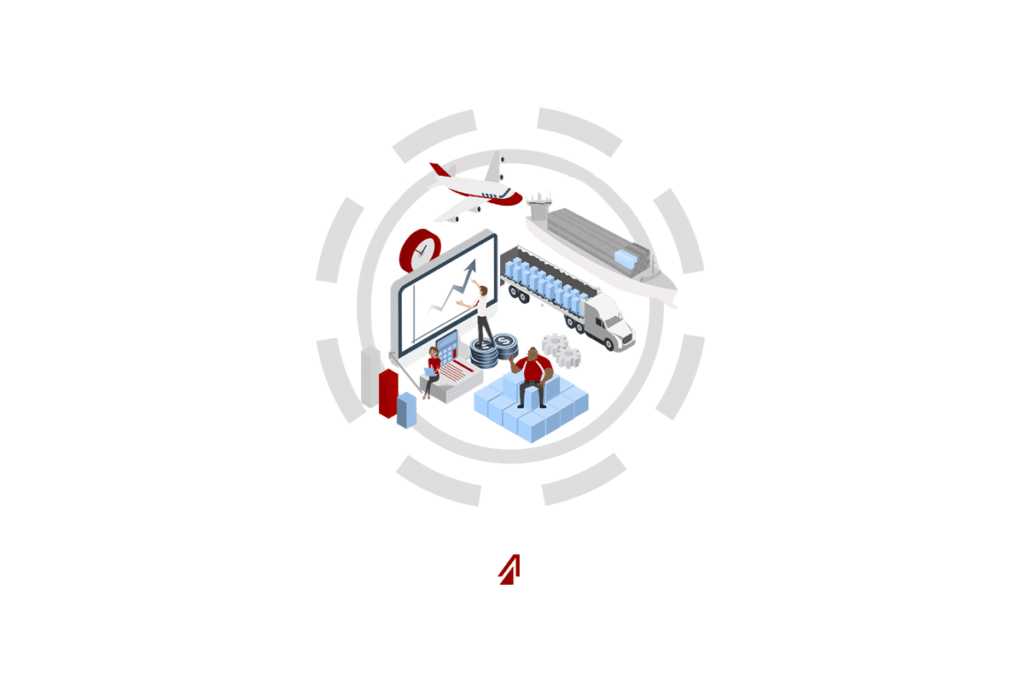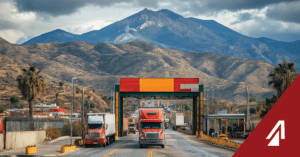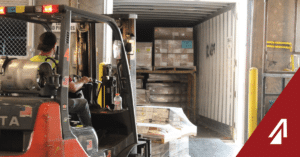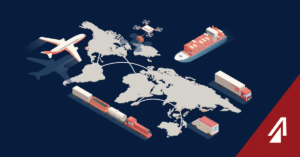Peak season is upon us as the holidays are here and consumer spending is up. As in previous years, the shipment to truckload ratio grew substantially following Thanksgiving, but this year has additional challenges that will further complicate the already stressful shipping season. Lockdowns and delays from the COVID-19 virus have reduced the supply of drivers, workers, and other resources used to create products and perform services. These have all contributed to higher prices and even greater shortages. However, in spite of this, the public and private sectors are working to mitigate these shortages and return the logistics industry to normalcy. See more in this month’s State of the Industry Report.
Coronavirus
The story of COVID in November has been greater shifts in mode transportation in the international market. Q4 capacity for air travel and transport has been tight, and has been exacerbated by flight limitations and reduced widebody passenger aircraft services. Throughout November, flights to and from China have been difficult due to ground handling challenges. Many major flights have arrived or departed empty due to staffing issues or other COVID restrictions. With more variants arriving, the situation is not expected to improve for the upcoming months. With air travel being limited, more shippers are converting to ocean.
Ocean volumes have increased with Q3 global demand up 2% and North American demand up 4%. Leading ocean carriers are also reporting a rise in sliding sailings. Carriers are also reporting that due to disruptions caused by port congestion, trucker shortages and changes in demand, schedule reliability is down to 34.4% and the average vessel delay is 7.3 days.
GDP
According to the Bureau of Economic Analysis, US GDP only increased 2.1 % in November, falling well short of the 3.5% projection from October. The global GDP is showing slightly more robust growth by expanding 5.1%.
Employment
The Bureau of Labor reports that the November unemployment rate fell .4% to 4.2%. This means there are approximately 6.9 million people unemployed – down 542,000 from October. The sectors showing the most growth were transportation and warehousing. Retail saw the greatest decline in employment in November.
Inflation
Inflation has proven to be another challenging metric in November. The annual inflation rate accelerated to 6.8%, making this month the highest rate of inflation since June of 1982. This month also marks the 9th consecutive month higher than the Fed’s 2% target. The largest sectors seeing inflation increases include:
- Energy – 33.3%
- Gasoline – 58.1%
- Shelter – 3.8%
- Food – 6.1%
Manufacturing
The United States manufacturing PMI fell 0.1 from last month to 58.3. This falls short of the initial 59.1 estimate and marks the weakest rate of expansion since December 2020. There are many contributing factors to this sluggish activity, most of which stem from issues with COVID – near-record supply chain delays, slowed demand, and intense labor shortages.
Interest Rates
The Federal Reserve published their rates in early November and made a slight increase as predicted. The average mortgage rate for 30 year fixed rose to approximately 3.1%. Lenders Fannie Mae, NAR, and Mortgage Bankers Association agree that Q4 2021 rates will hold around 3.17%.
Capacity
Global shipping capacity has become tighter facing peak season. DAT Trendlines confirms that the November Load to Truck ratio is approximately 5:1. This is a slight decline from October, but remains significantly higher (15.6%) than the same period last year.
Certain travel ban reductions have helped with increases in air cargo services. Widebody passenger belly capacity from the UK to US, for instance, has increased approximately 21%.
Truckload and container capacity at the ports are still a major concern for manufacturers this year.
Regulations
Much has been happening US legislation regarding logistics and infrastructure in November 2021. In mid-November, US President Biden signed an over $1 Trillion dollar infrastructure bill into law. This bill has significant allotments for US roads, bridges, ports, and other modern necessities like internet accessibility, but does not address issues such as truck parking. While much is being done for infrastructure, “There’s not a lot on the safety regulations front,” says Avery Vise, Vice President of the Trucking for Research Firm. “There’s more coming in areas of labor and environmental regulations.”
The largest regulation concern is the “AB5” case in California. This statute outlaws the leased-owner-operate market in California. This means that up to 70,000 owner-operators in California will now be classified as employees and not as independent contractors. These have significant pay, benefits, and tax implications that many larger companies are not willing to undertake.
Another regulation battle is being waged by carrier, Werner, by proposing to the federal government an accelerated licensing exemption. Werner claims the exemption will boost productivity and employment for new CDL drivers. Currently, drivers that pass the skills test must wait weeks or months to receive their licensure. The exemption proposes that these drivers be allowed to work immediately with “trainer” drivers accompanying them. There is currently no word on the federal government’s decision on Werner’s request.
As for environmental regulations, the Environmental Protection Agency (EPA) is expected to reduce the allowed NOX permitted from heavy trucks from .2 grams per brake-horsepower-hour. This will affect all newly constructed vehicles as well as a significant number of older vehicles on the road. It is also estimated that with the emergence of electricity and natural gas vehicles, new regulations will be established to require a certain percentage of each fleet be powered by non-diesel means.
Rates
In November, DAT Trendlines has reported an increase in van load spot rates by 2.4%. This is slower than October’s 2.7% rate climb, but still poses a significant increase over last year’s prices. DAT also reports that approximately 25% of the total truckload freight volume is in the spot market and is keeping spot rates 46% higher than the average rate.
Behaviors
According to industry expert, Deloitte, with the vaccination rate up and the delta variant cases down, more American consumers are spending greater amounts on services. The Q3 personal consumption expenditure (PCE) grew 12.4% and the year-end consumer spending on services is up 5.8%.
Technology
In November, semiconductor chip shortages were the greatest technological challenge to the logistics industry. Manufacturers are competing over a limited supply of resources and this drives up prices, threatens product schedules, and interrupts new product introductions.
On a positive note, the recent Infrastructure law has provisions for domestic manufacturing incentives. Both the public and private sectors are focusing initiatives on developing US-based fabrication sites for products and components.
Fuel Impact
Fuel costs continue to be a challenge as the current prices has increased 3.2% over rates in October. This represents a 53.2% rise over fuel prices from November 2020. The average price for diesel per gallon is $3.67.
Driver Concerns
ATRI’s Top Trucking Issues and Driver Issues Reports for 2021 were published in November. Many perennial issues were present for both lists including driver compensation, detention/delays at customer facilities, as well as transportation infrastructure/parking. Top 10 issues in both categories were:
Trucking Issues:
- Driver Shortages
- Driver Retention
- Driver Compensation
- Lawsuit Abuse Reform
- Truck Parking
- CSA
- Detention/Delay at Customer Facilities
- Transportation Infrastructure
- Insurance Costs/Availability
- Diesel Technician Shortages
Driver Issues:
- Driver Compensation/Truck Parking (Tie)
- Detention/Delay at Customer Facilities
- Fuel Prices
- Driver Training Standards
- HOS Rules
- ELD Mandate
- Driver Distractions
- Transportation Infrastructure/Congestion/Funding
- Speed Limiters
- CSA



